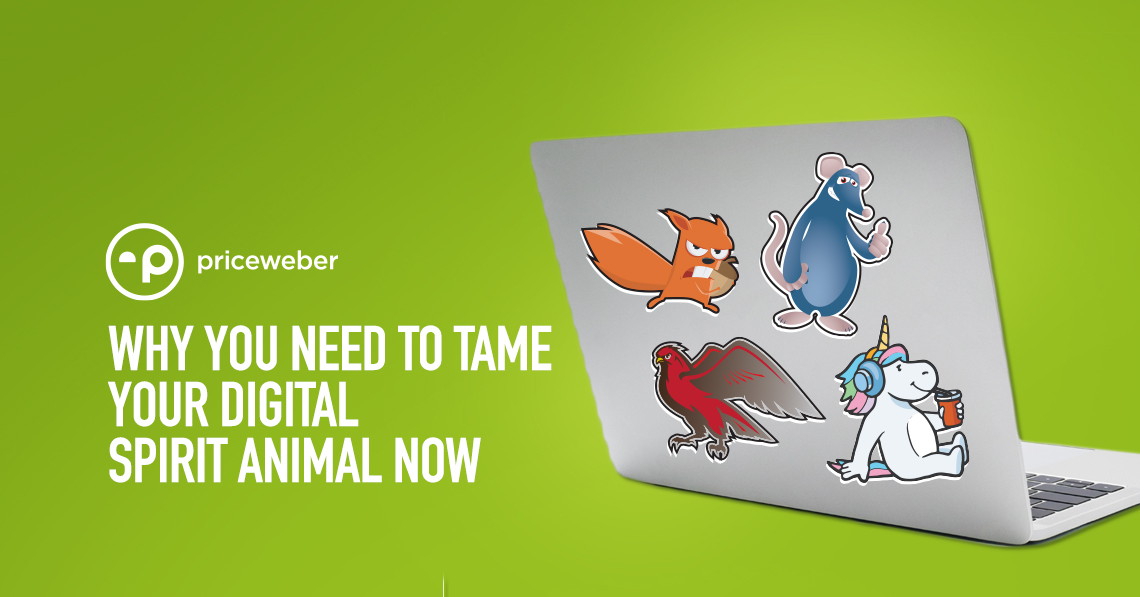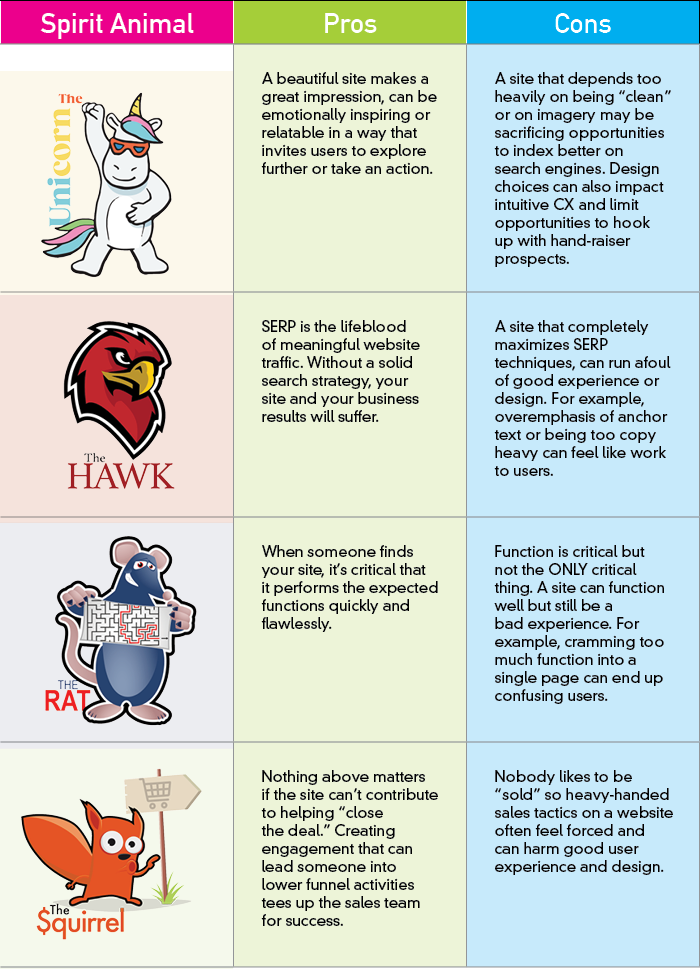Yes, you have a digital spirit animal. We all do. The question is, how do you know which one you are, and how can you keep it from messing up your digital marketing efforts? In this edition of Plain Talk, we will define the most common digital marketing biases (spirit animals) and give you a clear path to building your ideal website.
We’ll cover:
-
The top 4 digital marketing biases
-
The pros and cons of each “digital spirit animal”
-
How to create balance in your digital marketing platforms
The top 4 digital marketing biases
There’s a joke that circulates at web agencies about how to build a good website that illustrates digital spirit animals pretty well. It says that web creatives don’t care if a website works or can be found as long as it’s beautiful. A web developer does not care if a site is beautiful or can be found as long as everything works when you click it, and a web SEO manager doesn’t care if a site is beautiful or works as long as you can find it. While certainly not universally true, there is some truth to these stereotypes. Each bias is at the core of what makes each expert good at what they do, right? So, let’s meet the digital spirit animals.
1. The unicorn – Obsessed with creativity, for the unicorn, it is “all about the work,” meaning first and foremost, they have a passion for doing something creatively unique or powerful that may also potentially win them a creative award or just look good on their personal website or Instagram feed. Most unicorns hate “copy” (“words” for the rest of us) and say things like they want the site to be “clean.” That’s code for little copy and lots of images and videos to tell the brand story. This obsession with cleanliness extends from websites to social channels and sometimes to advertisements as well. Their ultimate passion is for the beauty of the design or concept, which, of course, makes sense.
2. The hawk – Laser-focused on SERP. They know every single thing that Google (yeah, ok, and Bing and Yahoo) care about to index your site as high as possible for as many critical keywords as possible. The hawk wants it done “right” from the start but also acknowledges that they will spend a significant amount of time tinkering (or asking you to tinker) with the site as competitors adjust their SERP strategies and search engines change their algorithms.
3. The rat – Before anyone gets angry, I like rats. They are brilliant problem solvers who can navigate their way through any maze. The rat is obsessed with making things work and finding solutions. Every click, every event, every search, every plugin and API has to do what it was designed to do, seamlessly without violating user privacy or hurting the experience for all users, including individuals with disabilities.
4. The squirrel – This is a bonus animal that’s not really part of our original anecdote, but much like a squirrel can stuff its body weight in nuts into its mouth, the squirrel spirit animal is obsessed with accumulating leads and sales. Selling at the expense of SERP, selling at the expense of branding or a beautiful site, selling at the expense of customer experience or content. Selling, selling, selling. This spirit animal will be tempted to make a digital property highly “salesy” or promotionally oriented – offers, discounts, bright yellow starburst graphics, and loads of integrations with marketing automation to push funnel adoption. Their accountability is, well, sales, so this makes perfect sense since a squirrel might be a key stakeholder in the development of a digital property like a website.
You may not see yourself in any of these spirit animals, but if you asked a good friend at work, chances are they could categorize you as leaning heavily towards one of these spirit animals or another.
The pros and cons of each digital spirit animal
So, after a brief bout of self-realization, you’ve come to the conclusion that you indeed have a spirit animal. Cool. Now what? Here are the basic conflicts created by the bias represented in each archetype.
How to create balance in your digital marketing platforms
The challenge now is that you, perhaps the site “owner,” can dictate a site to your team or your agency in a way that best suits your spirit animal. For example, we once had a wonderful unicorn client in the health care space who insisted that their new website strongly resemble a website for her favorite seafood restaurant – almost no copy and lots of beautiful pictures of fish. To avoid that potential disaster, we helped guide her through this process:
1. Identify stakeholders that represent the different bias types you see in our “spirit animals.” Make sure that someone is championing creativity, SERP, functionality, and commerce and that everyone has input.
2. Make sure that everyone knows that their input is just that, input and that each stakeholder must contribute to how their discipline can dovetail with the others in a site that maximizes the value of all.
3. Define a referee. Each team should have a final decision maker (this is basically a RACI model) who will determine in the end how input is put into action. The referee (or “responsible” in a RACI model should be aware of their own bias and factor that into decision-making so as not to be heavy-handed. After all, you want the best site in all ways.
4. Define key check-in points with your digital project manager and your team to make sure that all stakeholders get visibility to major landmarks in your planning and building process. The very best of intentions often go off the rails, and it’s easy. For example, a good SEO strategy may fall by the wayside during your content population phase if your SEO guardian is not getting some visibility to your project.
5. Involve your team in the UAT (user acceptance testing) process. This is your final look before launch and the last opportunity to provide input into the primary concerns of each of your spirit animal guardians. Hint, if you’ve involved them all along, there should be no surprises. Additionally, this is the last opportunity to engage your team and gain alignment before launch, something we find to be good team management and politically astute as well.
So, which spirit animal are you?
If you’d like to engage in a discussion about your digital spirit animal or just want some advice about how to build an awesome website team, you can drop us a note here or give us a call at 502-499-4209.
Every week our Plain Talk newsletter goes out to thousands of business leaders across the country. If you like what you are reading today, please sign up for Plain Talk below. Thanks!



